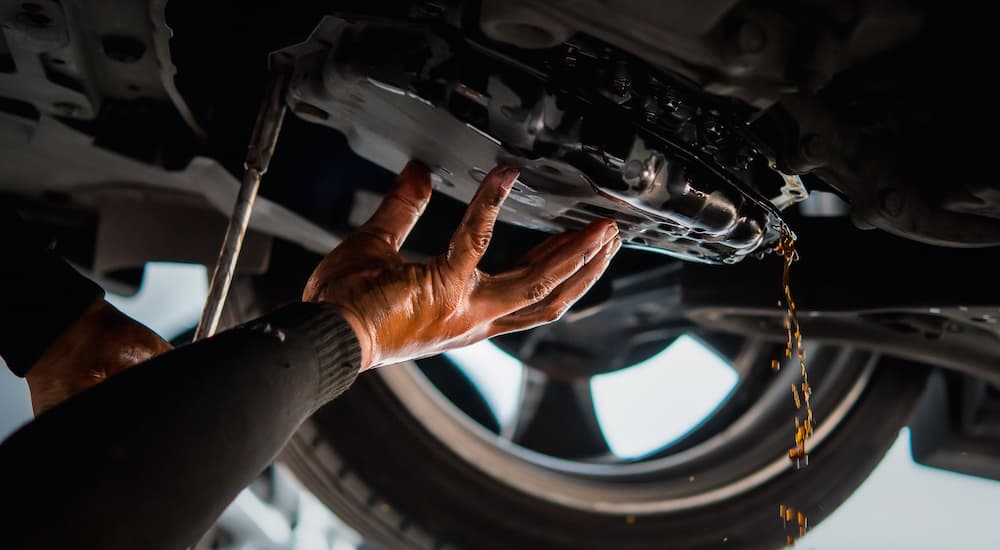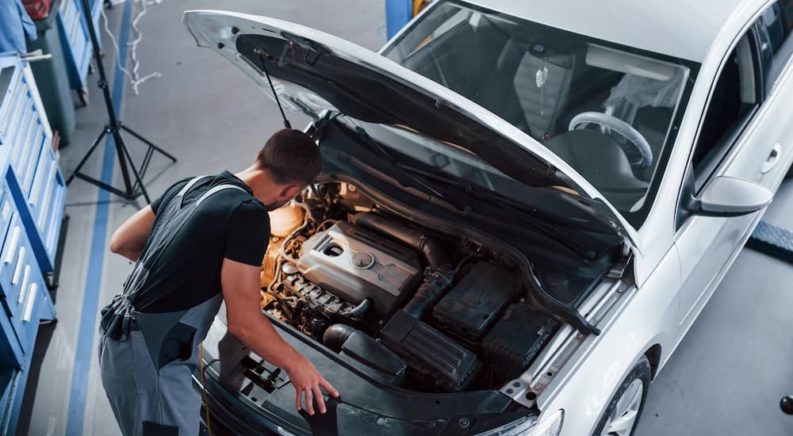Besides the engine, your transmission is the most expensive part of your vehicle that might need to be replaced or rebuilt. The transmission is absolutely essential to your vehicle’s performance. It is so integrated into your vehicle that a great deal of time and effort is needed to remove and replace it. That’s the bad news. The good news is that your transmission should easily last a long time as long as you take proper care of it and follow a few service and maintenance guidelines to keep it in great shape. You can do this yourself with a bit of know-how and the right tools. A full transmission rebuild or replacement is much more complex, and you should only attempt it if you have a great deal of experience.
Considering the importance of your vehicle’s transmission, a shocking number of people don’t fully appreciate how to take care of it or recognize when something’s wrong. What is the lifespan of a car transmission? What are the signs of a faulty transmission? As long as you didn’t pull the short straw and get a faulty one to begin with, proper care and maintenance can extend the life of your transmission to 200,000 or even 300,000 miles and many years of excellent performance.
Common Signs of a Faulty or Failing Transmission
Difficulty Switching Gears
No matter what type of transmission you have, its job is to send power from your engine to the wheels of your vehicle. Both manual and automatic transmissions use gears to determine how that power is sent. One of the biggest indicators that something is wrong with your transmission is when it has difficulty switching between gears. It might hesitate, seem like it’s fighting to switch, be sluggish, or sometimes just refuse to switch gears. These are all signs that you need to have your transmission checked right away.
Slipping Gears
Another common problem is that your transmission might want to switch gears just fine, but it doesn’t really seem to hold the gear once it gets there. Slipping gears usually means you’ll hear the engine revving during a gear change. It may feel like you’ve lost traction, or like the wheels aren’t responding properly to the power they should be getting from the engine. You can feel a delay in acceleration, or lose it entirely as your car drops into the wrong gear for your speed. This can be incredibly dangerous, so don’t delay having your transmission checked out.

Grinding Sound or Shaking
If you ever learned to drive a manual transmission, you know what it sounds and feels like when your transmission grinds, or how the car lurches and shakes when engaging the clutch into first gear too quickly. Assuming you’ve grown beyond those early lessons, or you have an automatic transmission, that sort of grinding or shaking should never happen. If you feel your vehicle shake, particularly when it changes gears, then something is wrong and it needs service.
Burning Smell
It’s a bad sign anytime you detect a burning smell from your vehicle. In some cases, there might simply be some fluid on part of the engine from a recent fill-up or flush and replacement, or you have a cap loose or improperly fitted on your engine. But burning smells can also mean something is overheating, or you have a leak somewhere. An automatic transmission can overheat, particularly under hard use such as long uphill climbs or when towing a heavy load. A hot transmission is an unhappy transmission, and can lead to more serious problems.
Transmission Fluid Leaks
Your transmission has lubricating fluid inside of it, and like all other fluids in your vehicle, it’s supposed to stay inside your transmission and its various components. Transmission fluid is typically red or pink in color, though it can have a brown tinge to it. If you notice any stains or fluid under where you’ve parked that matches these colors, it’s time to have your transmission checked for leaks. Fixing a leak is far cheaper and quicker than replacing your transmission after it overheats from not having enough fluid.
Check Engine Light
Depending on your vehicle, you may have a dedicated transmission warning light on your dashboard, but in most cases transmission issues are indicated by the general “Check Engine” light. If you see this turn on, it’s time to do a thorough inspection yourself, or take it to your favorite shop for a proper checkup. Keep in mind that many inexpensive scan tools can only retrieve error codes for the engine, not the transmission and other components. While fixing a transmission issue can be a hassle and isn’t the cheapest thing you’ll ever do, but it’s infinitely better than a replacement, for your transmission or your car.
How to Get the Most from Your Transmission
Regularly Check and Refill the Fluid
Proper maintenance is going to be the best way to keep your transmission in good shape, which starts with checking its fluid regularly. If your vehicle has an automatic transmission, it should have a dipstick inside the engine compartment that lets you check how much transmission fluid it has and whether the color still looks good. Some new vehicles, as well as manual transmissions, lack this dipstick, so you’ll need a professional check your fluid for you.
Your transmission fluid should be slightly transparent and red or pink in color, perhaps with a light brown tint. If the fluid is dark brown or black, or looks thick or cloudy, it’s time to replace it. If the fluid color looks good but it a little bit low, you can top off with the same type of fluid. Be sure to check your owner’s manual to learn exactly what type of fluid your transmission needs. There are several different types, and you need to use the one the manufacturer specifies. On the other hand, if you can see any metallic shavings in the fluid, or it looks burnt, your transmission may be damaged and it may be time for serious repairs.

Perform Scheduled Service
Just like your engine, your transmission needs regular service and maintenance. You’ll need to change its fluid and filter about every 20,000 miles or every 18 months. You should also typically have the fluid flushed about every 40,000 miles or 24 months to remove any sediment and debris that can buildup over time. With a manual transmission, there’s also oil and clutch fluid that needs to be replaced about every 30,000 miles. As always, check your owner’s manual for a service schedule and precise information for your vehicle.
Use Synthetic Transmission Fluid
Standard transmission fluid is fine, but it’s not amazing, either. Like synthetic motor oil, synthetic transmission fluid is more expensive, but it’s designed to last longer and be far more effective at preventing your transmission from overheating. It’s typically worth the added cost to go synthetic and keep things running beautifully.
Let Your Vehicle Warm Up
It’s important that your transmission fluid gets warmed up to the proper operating temperature. This ensures that it has the proper consistency and viscosity to lubricate moving parts and keep your transmission running smoothly. On cold winter days, let your vehicle warm up for the sake of your engine and transmission alike. It’s annoying, but it’s worth it.
Practice Good Driving Habits
The way that you drive has a tremendous impact on your vehicle, particularly if you tend to drive in a rather demanding manner. Aggressive driving with a lot of acceleration and braking is quite hard on a car’s engine, brakes, tires, and transmission. Driving in a smoother, more relaxed way will help those parts last longer. I promise you’ll still get where you’re going, and your car will thank you by running better and costing less in maintenance expenses.
At the end of the day, if you take care of your vehicle, it will take care of you. So drive safely, go easy on the gas and brakes, and if you see a warning sign that something’s wrong, take care of it right away.

